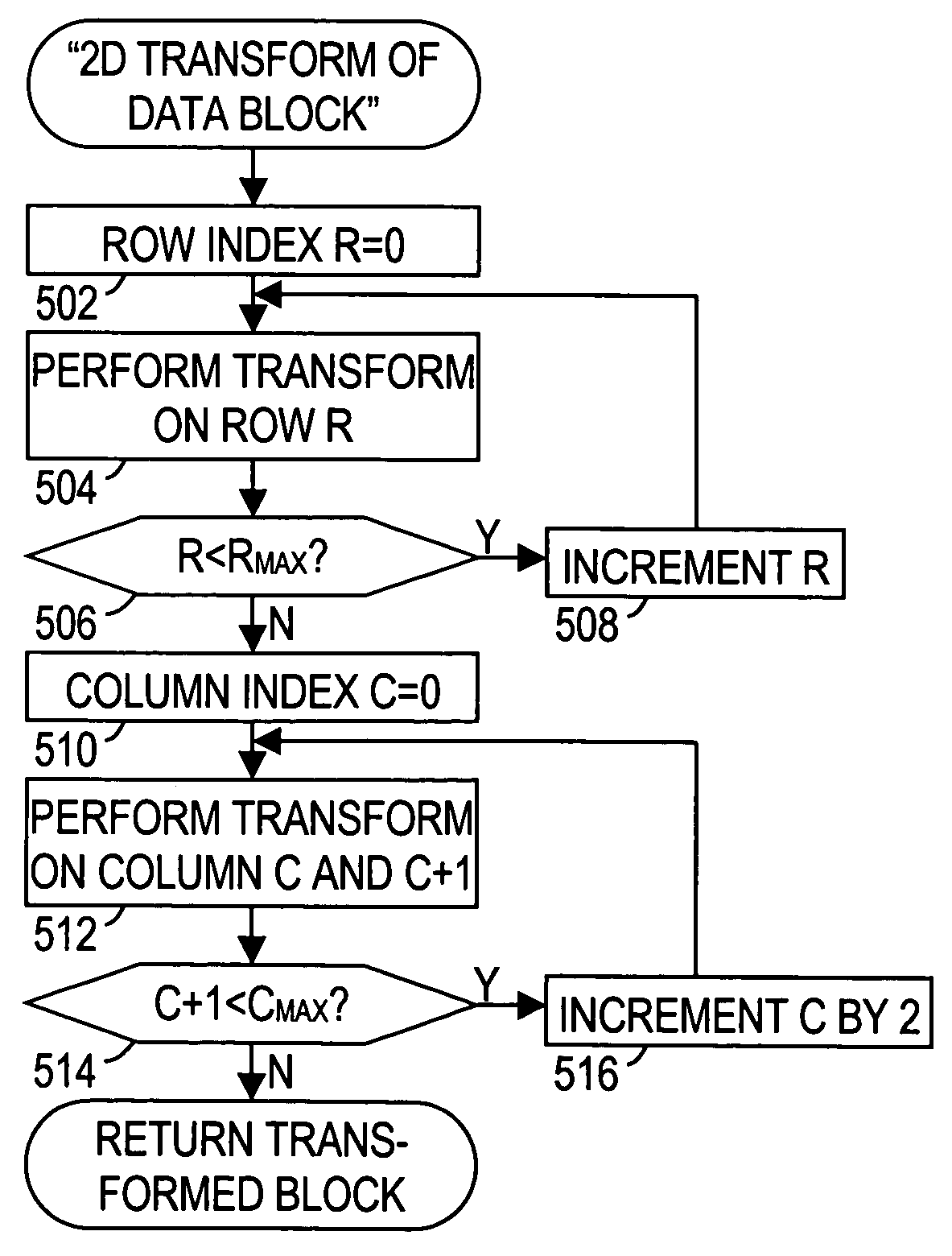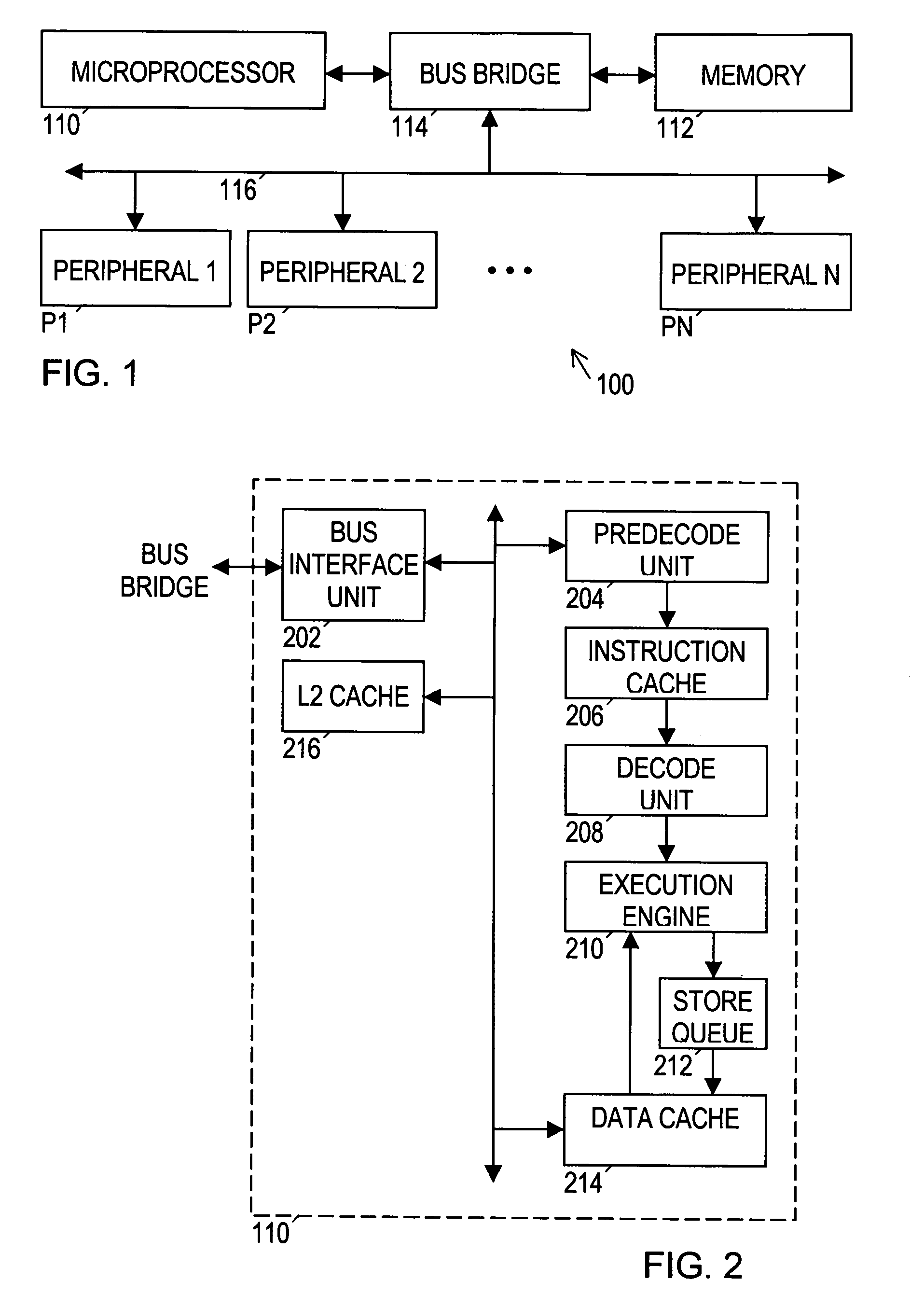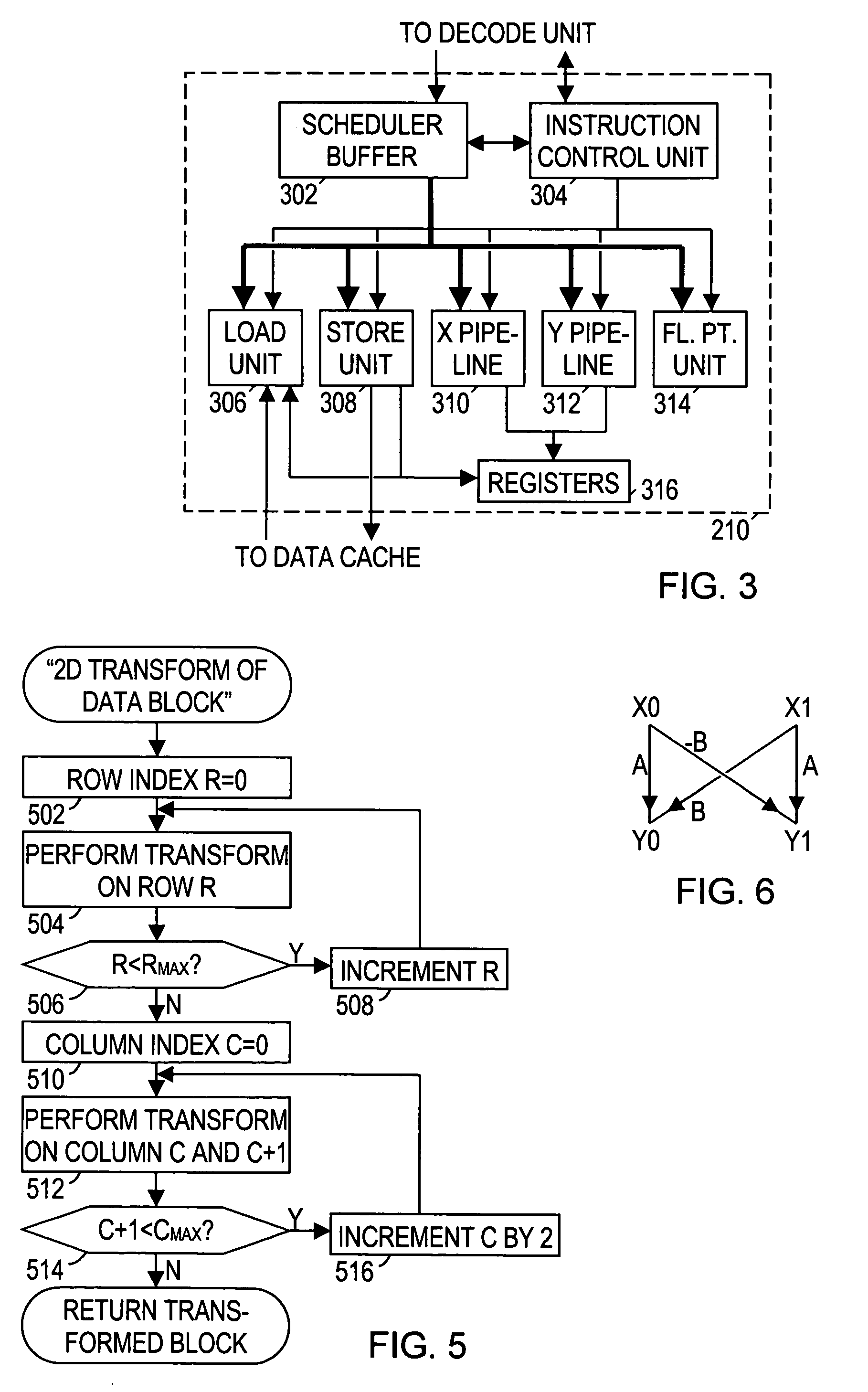Two-dimensional discrete cosine transform using SIMD instructions
a cosine transform and instruction technology, applied in the field of two-dimensional discrete cosine transform using simd instructions, can solve the problems of information loss, traditional x86 processors are not well adapted for the types of calculations used in signal processing, and the straightforward dct algorithm is often prohibitively time-consuming, so as to avoid unnecessary conversion and improve computational efficiency
- Summary
- Abstract
- Description
- Claims
- Application Information
AI Technical Summary
Benefits of technology
Problems solved by technology
Method used
Image
Examples
Embodiment Construction
[0045]The DCT and IDCT transforms discussed in the background can be extended to two dimensions. This may be done, for example, on a flat image to identify the spatial frequency components of the image. Typically, the image is expressed in terms of small picture elements, termed pixels, laid out in a rectangular grid and each assigned a single color value. (The color value may be expressed in terms of multiple components such as Red, Green and Blue intensities, but this is easily accounted for by repeating the process disclosed below for each component). To minimize hardware requirements, the image is generally divided into small, square blocks of pixels (e.g. 8×8 pixels forms a block), termed macroblocks, and the two-dimensional transforms are applied to each block separately.
[0046]Since the DCT and IDCT transforms are linear, when they are extended to two dimensions the horizontal and vertical transforms can be performed independently and in any order. FIG. 5 shows a flowchart of ...
PUM
 Login to View More
Login to View More Abstract
Description
Claims
Application Information
 Login to View More
Login to View More - R&D
- Intellectual Property
- Life Sciences
- Materials
- Tech Scout
- Unparalleled Data Quality
- Higher Quality Content
- 60% Fewer Hallucinations
Browse by: Latest US Patents, China's latest patents, Technical Efficacy Thesaurus, Application Domain, Technology Topic, Popular Technical Reports.
© 2025 PatSnap. All rights reserved.Legal|Privacy policy|Modern Slavery Act Transparency Statement|Sitemap|About US| Contact US: help@patsnap.com



